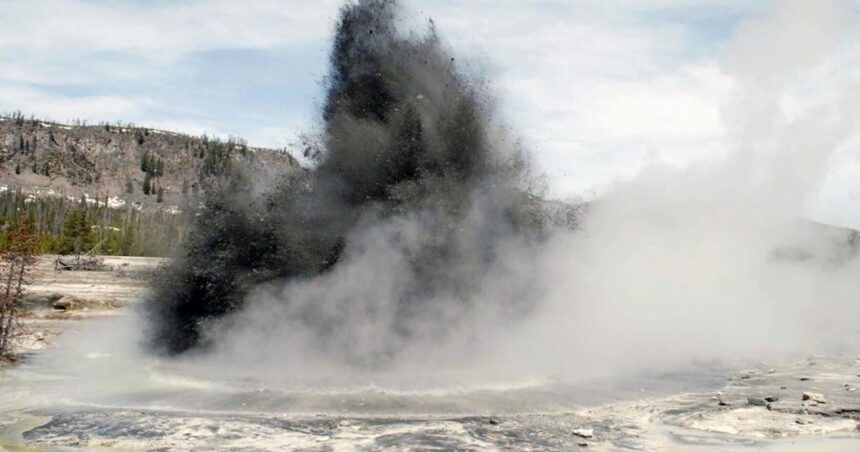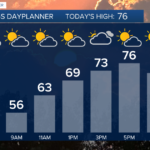Yellowstone Caldera Chronicles is a weekly column written by scientists and collaborators of the Yellowstone Volcano Observatory. This week’s contribution is from Michael Poland, geophysicist with the U.S. Geological Survey and scientist-in-charge of the Yellowstone Volcano Observatory, and Shaul Hurwitz, research hydrologist with the U.S. Geological Survey.
The July 23, 2024, hydrothermal explosion at Biscuit Basin in Yellowstone National Park was dramatic and extremely hazardous. It was the first such explosion in the park to be captured clearly on video, and it highlighted what has often been underappreciated as a source of hazard.
A hydrothermal explosion is triggered when liquid water flashes to steam in an underground cavity. When the cavity (or reservoir) is connected to the surface, a geyser can form to release that pressure. When the reservoir becomes sealed and confined, mainly due to deposition of silica, the liquid and steam mixture increases pressure in the confined space, similar to a pressure cooker. If the pressure in the reservoir increases to the point that it exceeds the strength of the surrounding rocks, the rocks break and an explosion occurs. The force of the explosion creates a crater (or enlarges an existing one) and hurls rocks that can cause damage and injury.
People are also reading…
Small hydrothermal explosions, or a “dirty eruption,” like this one in 2009 from Wall Pool at Biscuit Basin in Yellowstone National Park are the most common geologic hazard.
“Dirty” geyser eruptions that throw out rocks and mud, like the one that was photographed at Wall Pool in Biscuit Basin in 2009, are considered to be on the small end of the explosion spectrum. The 2018 eruption of Ear Spring in the Upper Geyser Basin, although small, also hurled rocks a short distance but did not enlarge the existing pool, so whether or not it should be classified as a hydrothermal explosion is debatable. Regardless, both of those events were caused by a pressure perturbation in the shallow hydrothermal system.





